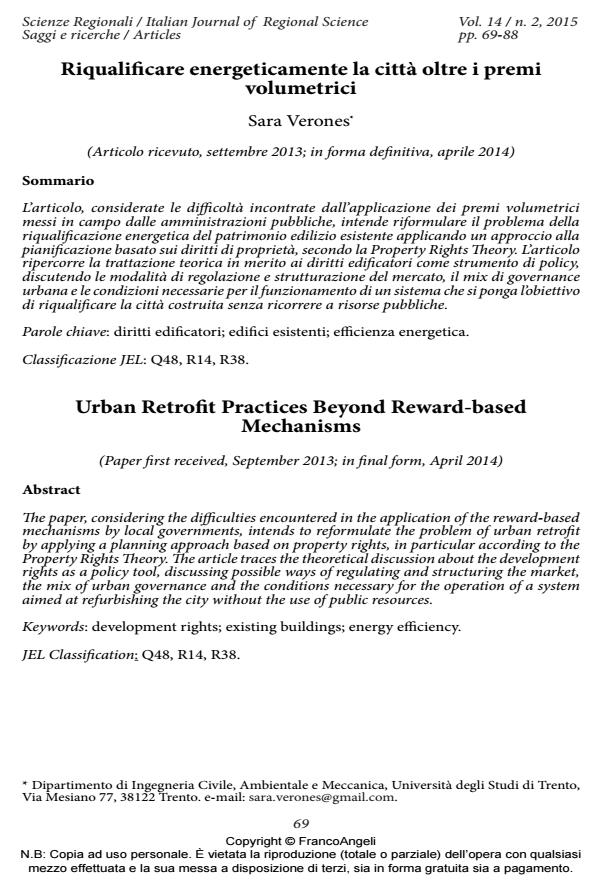Urban Retrofit Practices Beyond Reward-based Mechanisms
Journal title SCIENZE REGIONALI
Author/s Sara Verones
Publishing Year 2015 Issue 2015/2
Language Italian Pages 19 P. 69-87 File size 173 KB
DOI 10.3280/SCRE2015-002003
DOI is like a bar code for intellectual property: to have more infomation
click here
Below, you can see the article first page
If you want to buy this article in PDF format, you can do it, following the instructions to buy download credits

FrancoAngeli is member of Publishers International Linking Association, Inc (PILA), a not-for-profit association which run the CrossRef service enabling links to and from online scholarly content.
The paper, considering the difficulties encountered in the application of the reward-based mechanisms by local governments, intends to reformulate the problem of urban retrofit by applying a planning approach based on property rights, in particular according to the Property Rights Theory. The article traces the theoretical discussion about the development rights as a policy tool, discussing possible ways of regulating and structuring the market, the mix of urban governance and the conditions necessary for the operation of a system aimed at refurbishing the city without the use of public resources.
Keywords: Development rights; existing buildings; energy efficiency.
Jel codes: Q48, R14, R38
- Non financial compensation for the redevelopment of the historic urban landscape: the case study of Villasor in Sardinia (Italy) Anna Maria Colavitti, Sergio Serra, in City, Territory and Architecture 15/2020
DOI: 10.1186/s40410-020-00124-9
Sara Verones, Riqualificare energeticamente la città oltre i premi volumetrici in "SCIENZE REGIONALI " 2/2015, pp 69-87, DOI: 10.3280/SCRE2015-002003